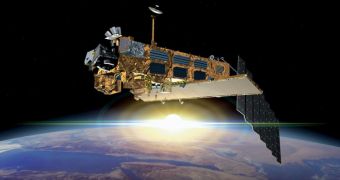A little more than a month after the European Space Agency lost contact with its flagship Earth-observation satellite, Envisat, ESA officials are declaring the mission concluded. For more than a decade, this spacecraft has contributed to boosting our understanding of the world we live in.
Since April 8, when radio contact was lost with the satellite, ESA mission managers have worked around the clock to reestablish communications. However, despite their best efforts, they could not get a lock on any telemetry transmissions from the iconic spacecraft.
A large number of failure scenarios were investigated, and solutions devised for each of them. Even so, scientists failed to figure out what went wrong with Envisat. France contributed to the rescue effort as well, by reorienting one of its own satellites to snap picture of the ESA spacecraft.
Ground radars and a vast network of listening stations around the world were also used, but to no avail. There were no signs of trouble, and no degradation in the satellite, before contact was lost, so the event took everyone by surprise.
ESA has an excellent track record in recovering damaged orbital assets, but that did not help the organization in the case of Envisat. One possible scenario is that an error sent the spacecraft in safe mode; as this was happening, a second glitch left the vehicle in an unknown mode.
At this point, the chances of recovering the spacecraft are very low. ESA officials say that scientists will continue to try and reestablish contact with the satellite for the next two months, but add that it's highly unlikely that Envisat will return to active duty.
“The outstanding performance of Envisat over the last decade led many to believe that it would be active for years to come, at least until the launch of the follow-on Sentinel missions,” ESA says in a press release.
“With ten sophisticated sensors, Envisat has observed and monitored Earth’s land, atmosphere, oceans and ice caps during its ten-year lifetime, delivering over a thousand terabytes of data,” the statement goes on to say.
“However, Envisat had already operated for double its planned lifetime, making it well overdue for retirement,” ESA officials add. Datasets provided by the satellite were cited in more than 2,500 scientific papers related to understanding Earth's interacting systems.

 14 DAY TRIAL //
14 DAY TRIAL //